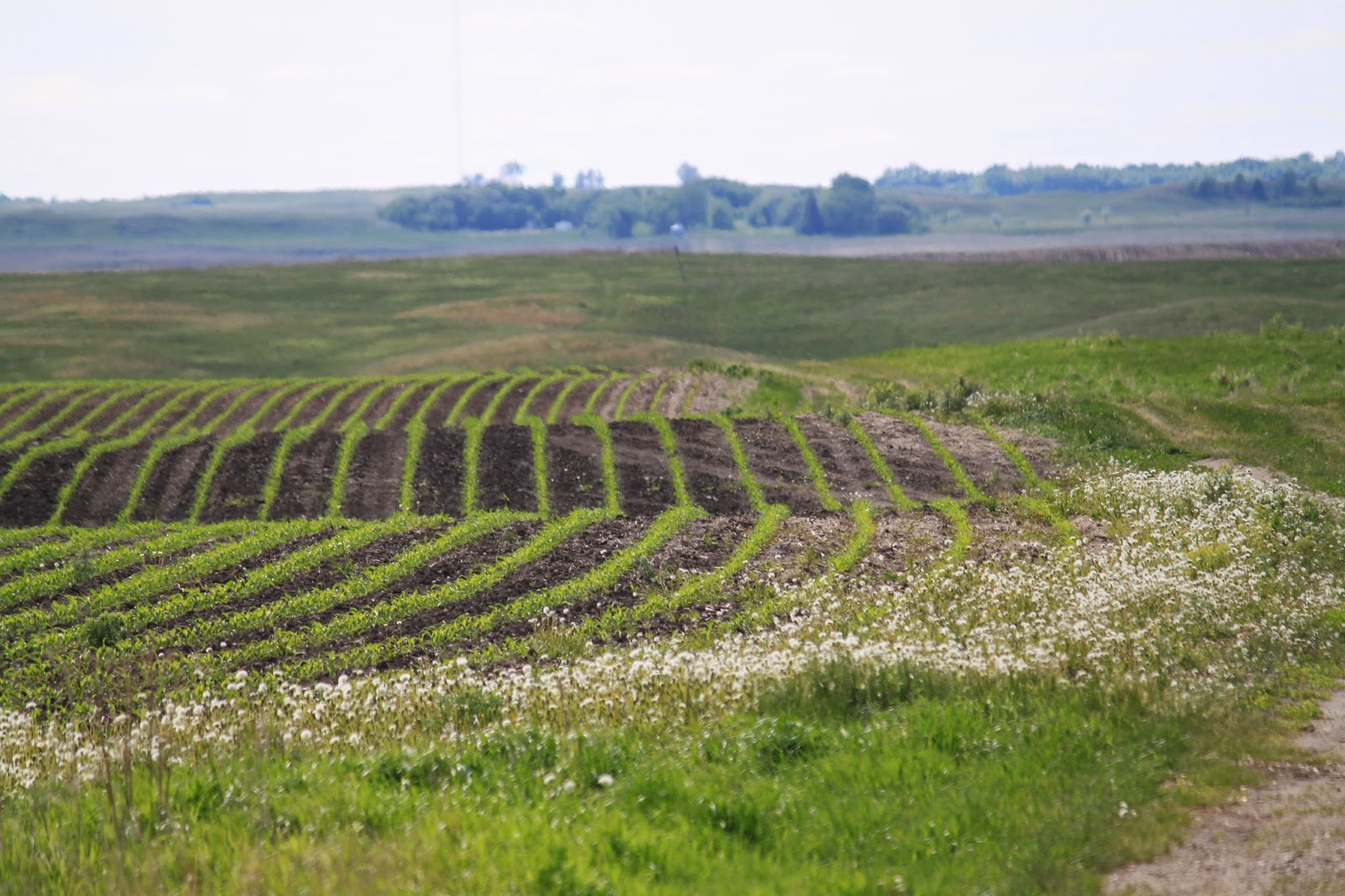To say that I enjoy my Cropping Systems: An Integrated Approach class would be to greatly understate the truth. Every Monday, Wednesday and Friday I go into the class thinking I know a lot about crop production but leave the class realizing there is so much more to learn.
This morning our class's task was to figure out why a farmer from Central North Dakota, who fertilized with nitrogen enough for a 60 bushel/acre wheat crop with 14% protein ended up with 100 bushel/acre crop with 12% protein instead.
Providing some context will be necessary to best explain the problem at hand.
Hard Red Spring Wheat is the main wheat grown in North Dakota. This is different from hard red winter wheat, primarily grown throughout the Southern Plains. HRSW is also different from durum wheat, soft red winter wheat, hard white wheat, and soft white wheat, all grown in the United States in different areas.
Different types of wheat are grown for different end uses. For example, durum is used for pasta because of its exception hardness. Different types of wheat are grown because they thrive in different environments. HRSW is especially grown, and grown in North Dakota, for its end use as a superior bread wheat, thanks to its high protein content. HRSW grown in North Dakota can thank its famous protein content to the environmental conditions that allow for optimal grain filling conditions.
Now, getting into the problem presented to our class. One would think that a %167 increase in yield would be a wonderful thing. However, when farmers have wheat that doesn't meet a minimum protein standard (around 14%) the price they receive per bushel decreases and sometimes the extra yield produced in the field at low protein isn't enough to cover this dockage.
If percent protein of a HRSW crop is so important, how can a farmer make sure he gets the right protein percentage at the end? Well, he or she can't do much. Some varieties of HRSW are bred to have higher protein than other varieties, but what it ultimately comes down to is the weather.
An important component of protein is nitrogen. Nitrogen must be available to wheat kernels in order for the kernels to have protein in the end. 80% of the nitrogen used for protein in wheat kernels is taken up before anthesis, or grain fill. The remaining 20% of nitrogen used for protein in wheat kernels is taken up after anthesis. What this ultimately means is that most of the nitrogen used for protein synthesis MUST be taken up and be available for the plant to use before grain fill occurs.
The 80% of nitrogen for protein that is already in the plant before anthesis is stored in the leaves as RuBisCo. This nitrogen becomes available as plant leaves senesce, or die. Plant leaves die in dry and hot conditions. Therefore, it would be optimal for grain fill of wheat to occur during a hot and dry time to make available all of the nitrogen from RuBisCo for the kernels.
When is the hottest and driest part of a North Dakota growing season? Late July, early August. That's why HRSW continues to be grown in North Dakota. We have the optimal conditions for high protein HRSW.
What happens if there aren't hot and dry conditions that make nitrogen from RuBisCo available for the kernels? Grain with a lower protein content. There is usually a negative relationship seen in wheat between yield and protein. Farmers usually end up high in one area and low in the other. This has to do with how nitrogen becomes available to the plant, as discussed above.
So what about the farmer that ended up with 100 bu/acre of wheat? Most likely, conditions throughout the growing season were perfect for a cool-season crop like wheat to grow profusely and produce a high yield of grain. Conditions were most likely cool and wet and the leaves of the wheat plants didn't senesce enough to allow for a release of stored nitrogen in RuBisCo.
Before today's class, I knew that there was a relationship between hot weather and high protein and cool weather and high yield but I had no idea why. Today's class was a huge eye opener and it makes me so excited to go back home to the wheat producing corner of the state I grew up in and share this awesome information with my neighbors.
 |
| HRSW on my grandfather's farm in North Central North Dakota. |




















